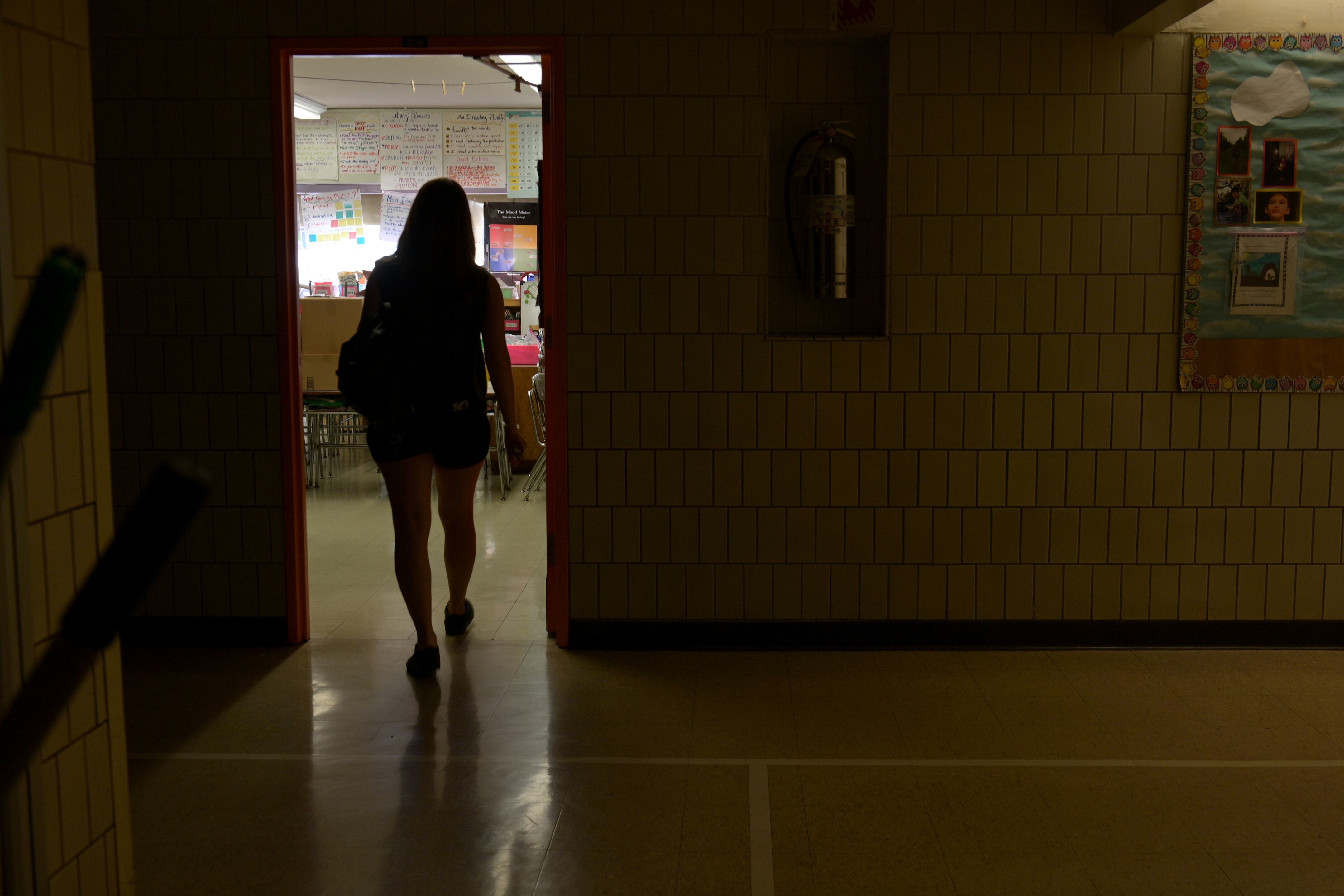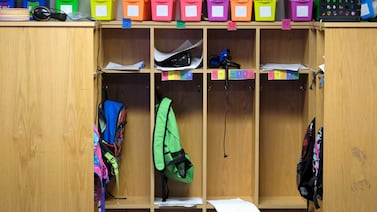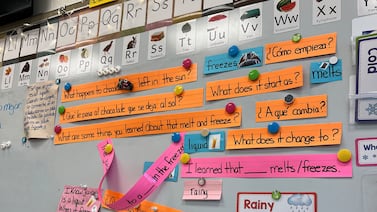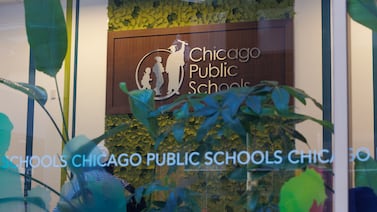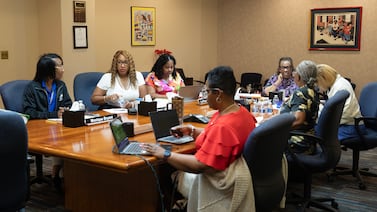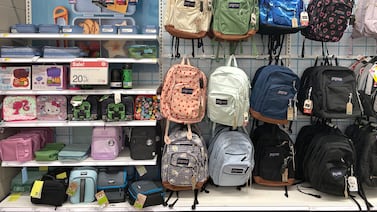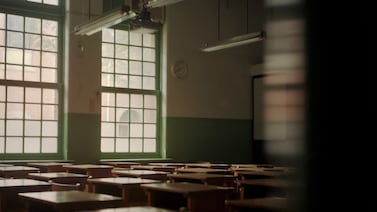As they agonize over the coming school year, Newark teachers are torn between competing concerns: the health risks of returning to school and the academic risks of keeping students at home.
Teachers’ mixed feelings about the fall have been exacerbated by a pitched national debate, where the decision to reopen schools has been wrapped up with questions about coronavirus transmission, student well-being, and the economy. They are also weighing personal factors, such as medical conditions or child care duties, that could make in-person teaching difficult or even dangerous.
Meanwhile, Newark teachers have had scant information to guide their decision-making. While the district released a reopening plan late Wednesday that lets families choose between in-person or remote learning, it says nothing about teachers’ options. That has left many frustrated and conflicted as they prepare to return to work on Sept. 1.
On the one hand, many teachers fear that returning to classrooms during a still-raging pandemic is a recipe for disaster. They question whether schools can enforce social distancing and ensure classrooms are properly cleaned and ventilated.
“It’s an outbreak waiting to happen,” said one teacher in a recent Chalkbeat survey that drew responses from more than 70 Newark educators.
On the other hand, after three months of remote learning this spring — when many students were sidetracked by a lack of technology or responsibilities outside school — some educators are convinced that virtual learning leaves many students far behind.
“Class instruction is best,” said an educator in a separate survey by the Alliance for Newark Public Schools, a coalition of education advocacy groups. “In order for students, especially our neediest groups, to get the best support — that needs to be in person.”
Adding to teachers’ frustration is the lack of clarity about their options. Newark’s reopening plan, which the district said is subject to change, does not specify whether teachers will get to choose between in-person or virtual instruction. It is also unclear whether teachers will have to meet certain criteria to opt for remote work.
In neighboring Jersey City, 39% of educators who responded to a district survey this week said they will request to work remotely due to health concerns, officials told NJ.com. About 13% of respondents said they may seek leave from their jobs.
In Newark, the teachers union has been advising the district on its reopening plan while urging members not to panic about returning to classrooms.
“We all have to calm down,” said Newark Teachers Union President John Abeigon during a virtual meeting last week where teachers asked scores of questions about the approaching school year. While Abeigon expressed confidence in the district’s safety protocols, he said the union will push for all-remote learning if virus infections spike.
Other union leaders have sounded the alarm over reopening schools. The head of New Jersey’s largest teachers union recently said she doubts schools will be ready to safely reopen by September, while unions in Paterson and Essex County have called for the school year to begin with all-remote learning. Outside New Jersey, some teachers unions are joining in a campaign to halt in-person learning “until the scientific data supports it,” while the American Federation of Teachers said this week it would support strikes over teacher safety.
Meanwhile, the Trump administration is prodding districts to reopen classrooms — a demand that Senate Republicans have echoed during coronavirus aid negotiations.
In New Jersey, Democratic lawmakers said Wednesday they will propose legislation requiring districts to keep classes online for the start of the school year. While Gov. Phil Murphy has said families must be allowed to choose all-remote learning, he continues to push districts to offer at least some in-person classes.
“In-person is not only a richer experience, but it is an essential experience with no other alternative” in some communities, Murphy said Wednesday, noting that some working parents cannot supervise their children’s remote learning.
Across the country, a growing number of districts are deciding to start with all-virtual classes. Newark’s plan calls for a mix of in-person and remote learning, but does not say how students and staff members will be sorted into those options. That has left educators grasping for answers.
“Will the district allow teachers to choose if they want to teach remotely?” one teacher wrote in response to Chalkbeat’s survey. “Where’s the teacher’s voice in all the planning?”
Many educators said their age or underlying medical conditions put them at high risk of becoming seriously ill from COVID-19. Those who are parents wonder what will happen if they are called back to the classroom while their children’s schools remain online.
Echoing some families, other teachers questioned whether students will be able to stay 6 feet apart or keep on their face masks all day, especially in sweltering classrooms that lack air conditioning. Still others worried that limited air circulation in their schools will increase the risk of airborne infections.
“Ventilation is nonexistent in our school,” one teacher wrote.
Kathleen Singh, a performance art teacher at University High School, has been ruminating on the health risks of returning to school. While she will do so if required, she said, she would feel safer working from home.
“I miss my students, I really do,” she told Chalkbeat. “But I also want to be safe, and I have to think about my health and the health of my family.”
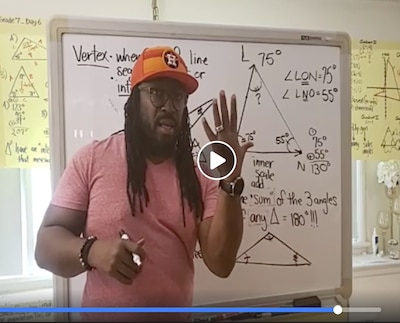
In recent days, the Newark Teachers Union has tried to assuage members’ fears while tentatively backing the district’s plans.
Staffers who are “not able or willing” to return to classrooms won’t have to, Abeigon said during Friday’s online meeting. Those who do return must test negative for the coronavirus and follow safety protocols outlined in the district’s reopening guidelines.
Responding to a common concern among teachers that classrooms will be too crowded to keep students safely distanced, Abeigon said the “overwhelming majority” of the district’s roughly 38,000 students will learn online rather than in schools.
“Trust me, you’ll be able to hear an echo,” he said.
However, the district has not released survey data on parents’ preferences and families have until Aug. 14 to request fully online learning, making it unclear how many students will stay home.
Still, the prospect that many students will continue learning remotely this fall is itself troubling to some educators.
While distance learning carries fewer health risks, it could cause academic and psychological harm to students. Research suggests that prolonged classroom closures will stall or even reverse many students’ academic growth, with low-income students and those with disabilities expected to suffer the most significant learning loss. Many students will also miss out on the social interactions, safe learning environment, and healthy meals that they rely on schools to provide.
Newark has not shared data on student attendance or academic achievement during remote learning this spring. But teachers say a sizable number of students did not attend virtual classes or complete assignments.
“There have been students who have completely fallen off the face of the earth and I can’t get in touch with [them],” one teacher wrote in the Alliance for Newark Public Schools survey. “I am very worried what will happen with these students [if] distance learning were to continue.”
For some students, technology was a major obstacle: While schools loaned out thousands of laptops, the district did not have enough devices to provide one to every student.
“Families with more than one child at my school were provided with a single Chromebook to share among the children,” another teacher wrote, adding, “Many families do not have internet access.”
Even for students who could log on, the consensus among many teachers was that remote learning simply can’t compare to classrooms.
“I think kids learn best in the classroom with a teacher and a community of learners,” said Denise Rawding, a math coach at Roberto Clemente Elementary School who holds a doctorate in educational leadership.
She worries about students who won’t be able to participate in online learning, either because they lack home technology or their parents work during the day. In the spring, only a third to half of her 40 third-grade students attended her video classes on any given day, she said, adding that she recorded videos for students who missed her live lessons.
While she knows in-person learning poses some risks and won’t be anything like normal this fall, she still intends to return to school.
“There’s nothing that would hold me back from going in,” she said. “I will be there.”

